Layering Is Key for Cold-Weather Riding, But Be Careful Not to Overdress
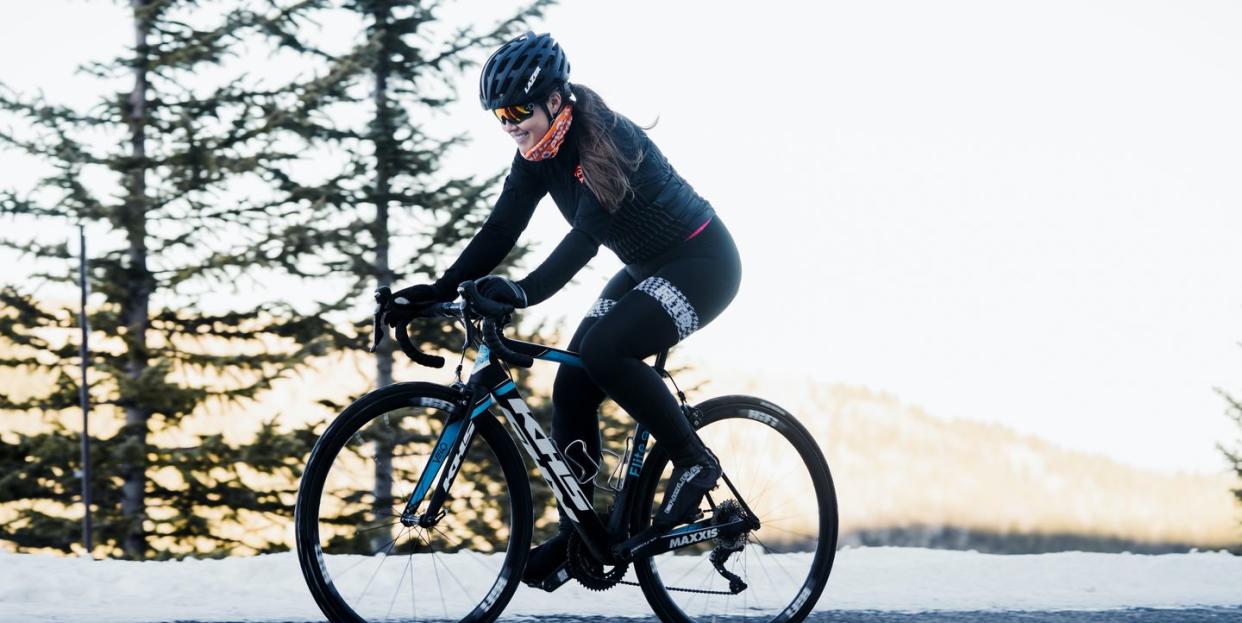
"Hearst Magazines and Yahoo may earn commission or revenue on some items through the links below."
Summer may be the most fun time to ride, but winter is where cycling stories are born. You’ll likely never forget the time you braved the bitter elements, navigated a snow-packed road, and had a great time on your bike while less hearty souls were back home sitting in front of the TV or rolling on their trainers.
If the thought of getting out there in the elements is a bit daunting, though, here’s a comprehensive guide to layering for cold weather—to help you enjoy your winter rides to their fullest. (For a ton of other great riding and gear advice, check out Jason’s book, The Complete Book of Road Cycling Skills.)
Layering Is Key
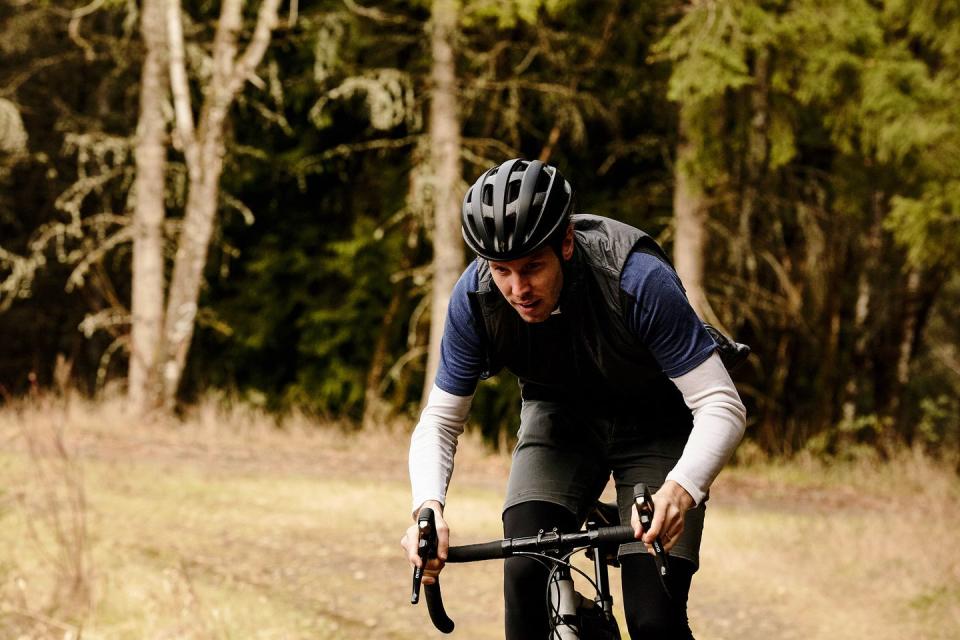
The first rule of cold-weather riding is to dress in layers. Use fabrics with good moisture-transfer capability so that sweat can dissipate to the outside and leave your skin relatively dry. That means no cotton, which has poor wicking capacity. And skip standard wool, and opt for merino instead: It’s the super-material of the wool family because of its ability to breathe and insulate so well. This soft, lightweight fabric is used in socks, base layers, and even some cycling jerseys.
Opt for one of the many high performance, cold-weather-oriented fabrics that have flooded the cycling market in recent years. Manufacturers such as Pearl Izumi, Castelli, Gore, Specialized, Rapha, POC, and Pactimo all make a wide array of cycling clothing that’s designed to keep the chill of old man winter at bay without overheating you, the rider.
The next rule is, when possible, do a little testing before committing to an outfit. Say you are headed out for a two-hour ride with friends on a 32-degree day. Get dressed a little early so you can spend some time experimenting on a short loop around your house.
“Maybe you start out with a heavy long-sleeve jersey and a jacket,” says Derrick Lewis, a former North American retail and communications manager for cycling apparel maker Rapha, and who once commuted to work in Minneapolis for nearly an entire winter. “Take a 10-minute spin and if you don’t feel a little chilly, circle back and dump a layer.”
Once you are about 30 minutes into your ride, your heart will get going and your circulation will pick up and you’ll start to get hot. Being hot means getting wet with sweat, and that can lead to you getting really cold.
Here’s a quick temperature-based layering tutorial to help you get started:
Don’t Sweat the Small Stuff
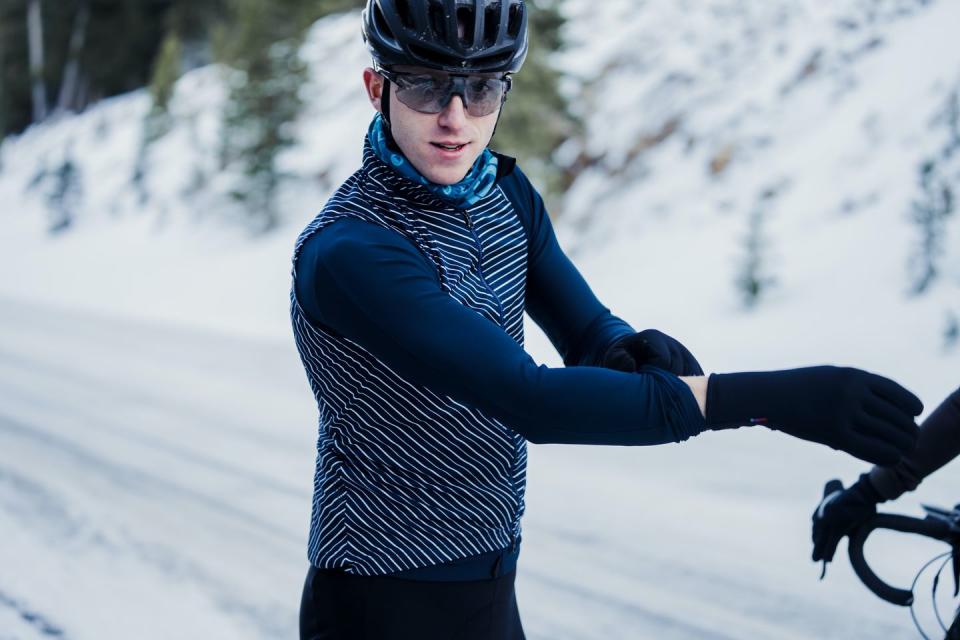
Lewis’s other key piece of advice for layering in cold weather is to stop obsessing over fingers and toes and instead think about your core. “Keeping your chest and shoulders warm is key,” he explains. “Your body has a very clear self-defense mechanism. If your core temperature drops even half a degree, it contracts veins to your outer extremities because it knows it can lose a couple fingers and toes and still survive. But it can’t let the core area get too cold because that is where all the vital organs are.”
That’s why you always want to start your dressing routine with a cycling base layer in winter, which helps to keep your core warm and promotes the transmission of sweat away from your body. So for instance, on a 32-degree day, Lewis says he starts with a long-sleeve base layer and then a winter-weight long-sleeve jersey that has some wind-proofing on the chest area. Finally, he adds a light wind jacket or vest.
“That way, if I start to warm up I can take that light wind layer off and stuff it into a jersey pocket,” adds Lewis. Indeed, it’s a good idea to keep your last layer packable so that you can adjust on the fly once you are out on the road.
Below the waist, the same strategy applies. Consider wearing a pair of thermal bib shorts with a pair of lighter-weight winter tights over them. This will keep your core area warm but let your legs breathe a little more since they are the ones doing all the work. Just don’t let your knees get too cold.
Plan for a Range of Temperatures
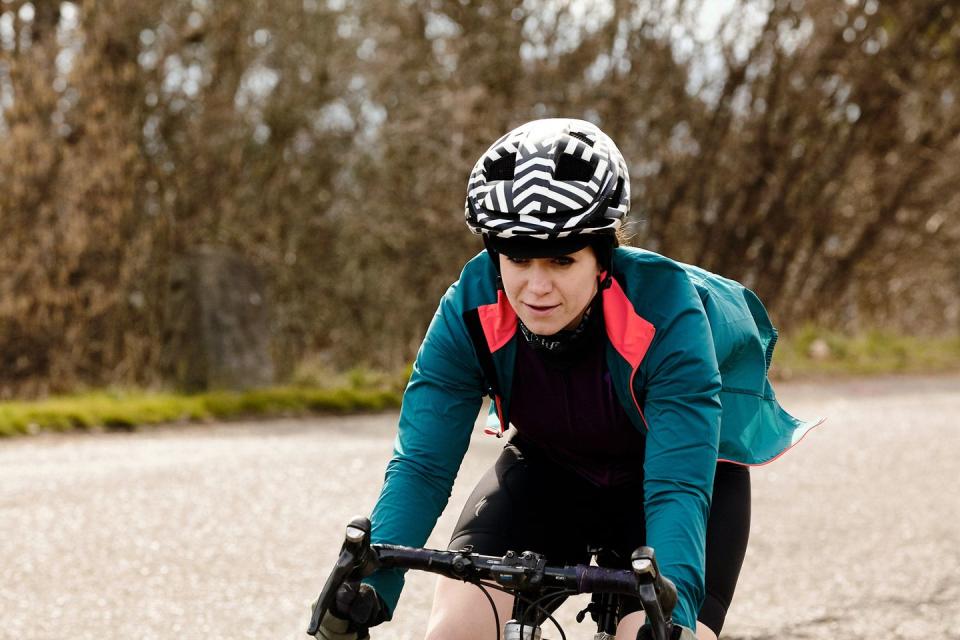
Jeremy Powers also knows a little something about riding in the cold. The multitime U.S. national cyclocross champion has long earned a paycheck battling foes—and Mother Nature—during this cycling discipline that takes place in fall and early winter. Whether competing on the European cross circuit, racing in the United States, or training at home in Massachusetts, Powers is constantly looking for the right balance between staying warm and staying comfortable and dry.
In general he says he looks for apparel that can adjust to a varying temperature range. That typically means lots of zippers, which allow him to open and close ventilation as the mercury and his internal temperature rise and fall. One of Powers’s go-to pieces is a softshell jacket with zippers at the chest and underneath the armpits. Powers also loves neck warmers because they keep heat from escaping out the opening of a jersey or jacket. “If your core is warm, you’ll be warm,” he says, echoing Lewis.
Gloves are another key consideration for Powers. He often opts to bring two pairs. “That way if you start to get sweaty, you can swap on the new dry pair,” he explains. “Otherwise the wind starts hitting that perspiration, which translates to you getting cold hands. And nothing ruins a ride quicker than not being able to feel the brake levers.”
While it’s hard to shift gears or use the brakes with full-on mittens, split-finger gloves are a good option on really cold days. These have one compartment for your thumb, one for your first two fingers, and a third for your ring and pinkie fingers. This design pools heat almost as well as mittens, but allows you to maintain some semblance of manual dexterity.
Layering Your Bottom Half
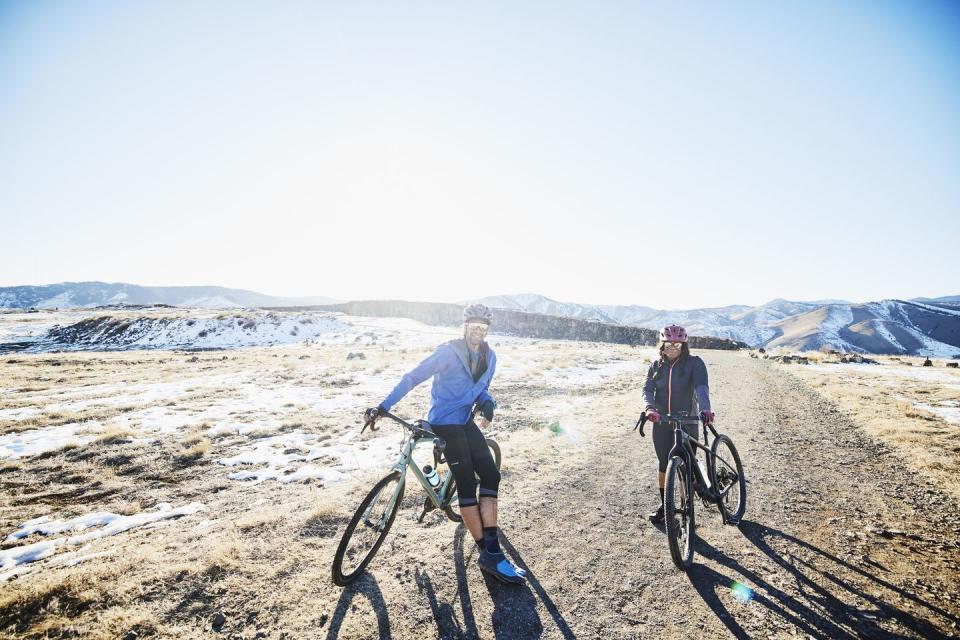
Further down, Powers focuses on his knees, usually opting for a pair of thermal tights that have some wind protection at the knee. “Your knees are doing a lot of work when you are riding,” he says. “You want to keep them warm so everything in there stays nice and lubricated.”
This falls in line with one of cycling’s oldest traditions, which says anytime the temperature is below 65 degrees, your knees should be covered. A set of lightweight knee warmers will suffice until the temperature gets below 50 degrees or so.
As part of his multilayer approach, Powers employs a trick to protect his feet. First he puts on winter-weight socks, then his cycling shoes, and then he slips a thermal hand-warmer packet (think skiing) onto the top of his shoe and secures it in place with a cotton shoe cover. For the last layer, he puts on a pair of neoprene booties, which keep road spray at bay.
“It sounds a little crazy, but I keep notes for all these different layering combinations based on the temperature,” Powers adds. “That helps me take a lot of the guesswork out and I just focus on getting out for my ride.”
Powers also gives a general nod to merino wool. “It does a great job of wicking and keeping heat in,” he says.
But before heading out for that ride, Powers always gives his bike a good once-over. Fixing a punctured tire or other basic mechanical issue is a minor inconvenience in the summer but a potential disaster in the dead of winter. Even 5 minutes of standing around can give you a severe chill that you can’t shake.
You Might Also Like

